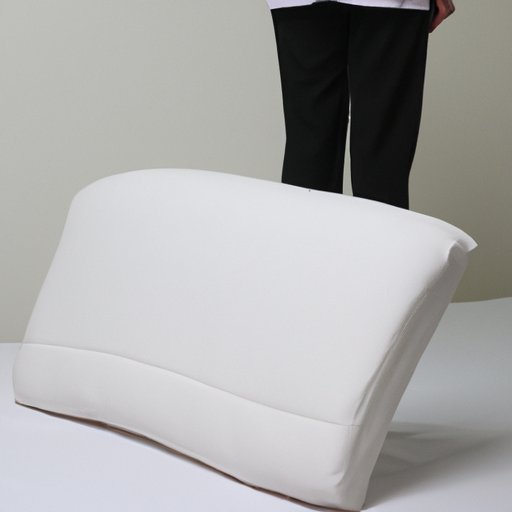Introduction
Many of us have trouble getting a good night’s sleep. We toss and turn all night, never able to get comfortable. But did you know that sleeping on your back can actually be beneficial for your health and well-being? It can help reduce neck and back pain, improve breathing, and even improve your posture. In this article, we’ll explore how to start sleeping on your back, from consulting with your doctor to using a body pillow.
Consult with your doctor
If you’re unsure if sleeping on your back is right for you, it’s best to consult with your doctor. They can help you assess any underlying medical conditions that may be causing your sleep troubles, as well as recommend the best sleep position for you. Be sure to ask your doctor about any medications or treatments that may be available to help you sleep better.
Practice relaxation techniques
Learning relaxation techniques can help you fall asleep faster and stay asleep longer. These techniques can range from deep breathing exercises to progressive muscle relaxation. Practicing these techniques can also help reduce stress and anxiety, which can keep you up at night. Try to practice these techniques every day to make them part of your nightly routine.
Invest in supportive mattress and pillow
Having the right mattress and pillow are essential for sleeping comfortably on your back. Look for mattresses and pillows that provide support and cushioning to your head, neck, and spine. If possible, try out different types of bedding in the store before making your purchase to make sure it’s comfortable for you.
Use a body pillow
Using a body pillow can help you maintain your posture while sleeping on your back. It can also help support your hips and knees, which can make it easier to stay in one position all night. When using a body pillow, make sure it’s not too high or too low, and that it’s supporting your body evenly.

Train your body to sleep on your back
If you’re used to sleeping on your side, transitioning to your back can take some time. To make the transition easier, start by lying on your side and gradually move to your back. You can also try tucking a pillow under your lower back to keep you in place. Once you’re comfortable sleeping on your back, it will become second nature.
Avoid stimulants before bed
Stimulants such as caffeine and alcohol should be avoided before bedtime. These substances can disrupt your sleep patterns and make it harder to fall asleep. Stick to drinking water and herbal teas before bed to help you relax and prepare for a good night’s rest.

Use a sleep aid or medication
If you’re still having trouble falling asleep, you may want to consider using a sleep aid or medication. Over-the-counter sleep aids can help you fall asleep faster, while prescription medications can help if you have a more serious sleep disorder. Talk to your doctor about the best option for you.
Conclusion
Sleeping on your back can be beneficial for your health and well-being. Although it may take some time to get used to, there are many ways to make the transition easier. From consulting with your doctor to investing in supportive bedding, following these steps can help you start sleeping on your back. With patience and dedication, you can soon enjoy the benefits of sleeping on your back.


